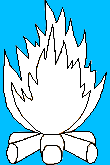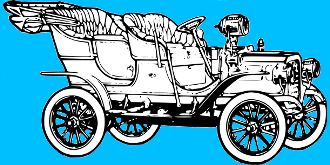Nove-Noga Info Post
Business Cards by the Dozen with GIMP.
If you found this page useful,Please Like and Share. Thank you.
Nove-Noga!

 Free GIMP Nove-Noga Business Cards by the Dozen.
Free GIMP Nove-Noga Business Cards by the Dozen.This is an extension of the previous PR, "Free Business Cards with GIMP" I am assuming you have already created your prototype business card. We are going to take the card that you created and place it into a 3 x 4 matrix in a landscape orientation on an 8.5 x 11" sheet of card stock. *NB: Make sure your printer can handle card stock.

Create Your Business Card with the Free GIMP Tool.
Each instruction line is usually in two parts; Verbal then Symbols.
"#)" The Symbol line will begin with "#)".
EG: #) >>File->Open("Name" = 'work image')[Open/Enter]
">>" Means Select, from the main menu if no {Dockable Dialog} or other source is indicated.
The square brackets mean [click this button].
The parenthesis mean (your entered info) E.G. (picname.xcf)
"Rt>" Means Right Click with your Mouse
"->" Click or Select
"->>" Double Click
">v" Click DropDown button
"^>" Shift + Click
" "literals" " The quotes usually contain what has been referred to as "Literals" meaning that that is exactly/literally what you should see.
" 'Described Item frequently an Icon' " EG: IBO Edit Icon 'Paper&Pencil'
[Action/Enter] is for the Option to Click the button or Hit the Enter key.
"*NB:" is for the Latin "Note Bene" which I interpret as Good Note or Note Well.*
"EG:" is for the Latin "Exempla Gratia" I use it when illustrating an example. See above.
Selection Synonyms: Click, Select, Choose,...
For more info on notation and standard practices see: "GIMP Notation and Descriptions"
*-*-*-*-*-*

*-*-*-*-*-*
1) To begin, Fire up your Free GIMP (GNU Image Manipulation Program) tool.
#) >>GIMP
2) Locate your final copy of the business card you created in the previous PR. Select File->Open and choose the xcf file of your finished business card.
#) >>File->Open{Open Image}->(Places="My Documents)->>(Name="GIMP")->>(Name="Card")->("Card3.xcf") [Open/Enter]
3) Merge all the visible layers into one layer.
#) Rt>{Layers-Gradients}Top Layer ->Merge Down
#) Repeat until you have a single layer.
4) Save again to a new version.
Save {Card3.xcf} as {Card4.xcf}
#) >>File->SaveAs{Save Image}("Card4.xcf") [Save/Enter]
*NB: Because you are saving the new card to the same directory as the one you opened the original from, it is not making you find your way from MyDocuments.*
5) Copy this image to your clipboard.
#) >>Edit->Copy
6) Open a new file 300 ppi; 3200x2450 pixels.
#) >>File->New{Create a New Image}>v [Template = (A3 (300ppi))] Width=3200, Height=2450 >v[px=pixels] [OK/Enter]
7) For my purposes, I am going to print my white cards over a light background to form cutting guides between the cards.
Set the background color appropriate to your needs.
#) >>{Toolbox}[Background]{Change Background Color}HTMLnotation(c3c3c3)[OK]
Select bucket fill tool. (It looks like a paint can.) Select BG color fill in the Tool Options.
#) >>{Toolbox}[Bucket Fill Tool] {Tool Options}[o] BG color fill{Untitled-1.0}
Click on your new background to apply color.
#) >>{Untitled}('anywhere on background')
8) Select the Move Tool from {Toolbox-Tool Options}. You will need it later. You could close this Dialog for now. It will give you more screen to work with.
#) {Toolbox}[Move Tool]
9) Now to paste your card into the field.
#) >>Edit->PasteAs->NewLayer
*NB: This should drop your card into the top left corner of your work area. We will need to create a vertical column of four cards. *
10) Drag the first card down out of the way.
#) ^>('card element') Drag out of the way
Paste the second card as you did the first.
#) >>Edit->PasteAs->NewLayer
11) Position the first card about two Pixels below the second.
Select Alignment tool
#) >>{Toolbox}[Alignment Tool]
Select First layer form Layers-Gradients.
#) >>{Layers-Gradients}Clipboard
Shift Click Selected Layer on the Untitled image.
#) ^>{Untitled}('Selected Layer')
Set Offset = 602.
#) >>{Tool Options} Offset(602)
Distribute Top Edges.
#) >>{Tool Options} [Distribute top edges of targets]
Align left edges.
#) >>{Tool Options} [Align left edge of target]
12) Select, from {Layers-Gradients} the topmost card (Clipboard #1). Right click and choose Merge down from the menu.
#) Rt>{Layers}Top Layer ->Merge Down
13) Copy your combination of the first two cards.
#) >>Select Edit->Copy
14) Paste as (New Layer) to produce the second pair of cards. It will appear on top of your first pair of cards.
#) >>Edit->PasteAs->NewLayer
15) Position this new pair of cards two Pixels below the first.
Shift Click Selected Layer on the Untitled image
#) ^>{Untitled}('Selected Layer')
Set Offset = 1204.
#) >>{Tool Options} Offset(1204)
Distribute Top Edges.
#) >>{Tool Options} [Distribute top edges of targets]
Align left edges.
#) >>{Tool Options} [Align left edge of target]
16) Select, from {Layers-Gradients} the topmost card (Clipboard #1). Right click and choose Merge down from the menu.
#) Rt>{Layers}Top Layer ->Merge Down
17) Copy your combination of the first two cards.
#) >>Select Edit->Copy
18) Center First Row of cards.
Shift Click Selected Layer on the Untitled image.
#) ^>{Untitled}('Selected Layer')
Align to Center.
#) >>{Tool Options} [Align center of target]
19) Paste new row/column.
#) >>Edit->PasteAs->NewLayer
*NB: had to change tools to move new row to right side
20) Select New Column and Align to right of central column.
Select Move Tool.
#) {Toolbox}[Move Tool]
Select Alignment tool.
#) >>{Toolbox}[Alignment Tool]
Set Offset = 1052.
#) >>{Tool Options} Offset(1052)
Distribute Top Edges.
#) >>{Tool Options} [Distribute Horizontal Center of targets]
21) Paste New Column.
#) >>Edit->PasteAs->NewLayer
22) Select New Column and Align to left of central column.
Select Move Tool.
#) {Toolbox}[Move Tool]
Select Alignment tool.
#) >>{Toolbox}[Alignment Tool]
Set Offset = -1052.
#) >>{Tool Options} Offset(-1052)
Distribute Top Edges.
#) >>{Tool Options} [Distribute Horizontal Center of targets]
23) Save Current Image as CardSet1.xcf.
#) >>File ->SaveAs (CardSet1.xcf) [Save/Enter]
24) Merge top 3 layers.
#) Rt>{Layers}Top Layer ->Merge Down
#) Rt>{Layers}Top Layer ->Merge Down
25) Center on page.
Shift Click Selected Layer on the CardSet1.xcf image
#) ^>{CardSet1.xcf}('Selected Layer')
Align to Center.
#) >>{Tool Options} [Align middle of target]
26) Save CardSet1.xcf as CardSet2.xcf.
#) >>File ->SaveAs (CardSet2.xcf) [Save/Enter]
27) Merge both layers.
#) Rt>{Layers}Top Layer ->Merge Down
28) Save CardSet2.xcf as CardSet3.xcf
#) >>File ->SaveAs (CardSet3.xcf) [Save/Enter]
29) Time to save our working masterpiece. Export your final image to chosen format. CardSet3.jpg
#) >>File->Export (Choose format by changing extension.) [Export/Enter] {Export Image as JPEG} [Export/Enter]
30) Print out your sheet of a dozen cards. Slice off the exterior boarders then, cut your cards apart using your small guide lines. Repeat as necessary.
This project was a lot easier to do than it was to write down all of the steps. Don't let yourself be intimidated by the length of these instructions. I was being as thorough as I could. In Truth, I discovered a small problem with the placement of the bottom elements of the original card I was working with. I went back and adjusted the Bottom and Edge offsets to correct and Re-Completed the project in less than 20 minutes.
The *Free GIMP Tool is amazingly detailed. I am writing these instructions as I figure out how to utilize the program for my own needs.
 For more information on GIMP
For more information on GIMPand a working list of my GIMP Tutorials,
go to:
http://nove-noga.com/GIMP.html
Time is your most precious commodity.
Do as much with your time as you can.
Nothing Ventured - Nothing Gained.
Nove-Noga!





